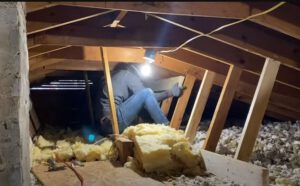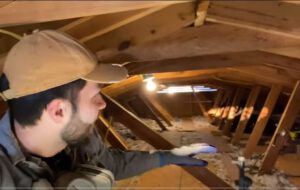 A sagging roof is a common problem that can occur in Australian homes. This issue is not only unsightly, but it can also compromise the structural integrity of the home and pose a safety risk to the occupants. In this article, we will explore how to identify and fix a sagging roof in an Australian home.
A sagging roof is a common problem that can occur in Australian homes. This issue is not only unsightly, but it can also compromise the structural integrity of the home and pose a safety risk to the occupants. In this article, we will explore how to identify and fix a sagging roof in an Australian home.
Identify the Problem
The first step in fixing a sagging roof is identifying the problem. Look for signs of a sagging roof, such as visible dips or unevenness in the roofline, cracks in walls or ceilings, or doors and windows that no longer open or close properly. These can indicate that the roof is bearing too much weight or that the support structure has weakened over time.
It is important to determine the cause of the sagging roof before attempting any repairs. The cause could be anything from improper installation to water damage, termite infestation, or deteriorating materials.
Fix the Support Structure
If the cause of the sagging roof is a weakened support structure, it is important to fix this issue before repairing the roof itself. You may need to add additional supports or replace damaged ones. This requires a professional contractor with experience in roofing and carpentry.
The contractor will assess the support structure and determine if there are any areas that need reinforcing or replacing. This may involve cutting into the roof and installing new beams or columns. Once the support structure is fixed, the roof can be repaired.
Repair the Roof
Once the support structure is fixed, you can begin repairing the roof. The type of repair needed will depend on the cause of the sagging roof. For example, if the issue is due to water damage, you may need to replace damaged tiles or shingles and apply a waterproof membrane to prevent further damage.
If the sagging is caused by rotting wood, the damaged wood will need to be removed and replaced. This requires a professional contractor with experience in carpentry.
If the roof is beyond repair, you may need to consider a complete roof replacement. This is a major project that requires careful planning and execution. A professional roofing contractor can assess the roof and provide recommendations for the best course of action.
Prevention
 Prevention is key to avoiding a sagging roof in the future. Regular inspection and maintenance can help identify potential issues before they become major problems. Be sure to inspect your roof at least twice a year, after heavy rain or wind, and after any construction work on your home.
Prevention is key to avoiding a sagging roof in the future. Regular inspection and maintenance can help identify potential issues before they become major problems. Be sure to inspect your roof at least twice a year, after heavy rain or wind, and after any construction work on your home.
Maintain good ventilation in your attic to prevent moisture build-up, which can weaken the support structure. Ensure gutters and downspouts are clear of debris and functioning properly, so water does not accumulate on the roof.
Conclusion
A sagging roof is a serious issue that requires immediate attention to prevent further damage and ensure the safety of the occupants of the home. By identifying the problem, fixing the support structure, repairing the roof, and taking preventive measures, you can avoid a sagging roof in the future and ensure the longevity of your home’s roofing system. It is important to work with a professional roofing contractor with experience in identifying and repairing sagging roofs for the best results.
